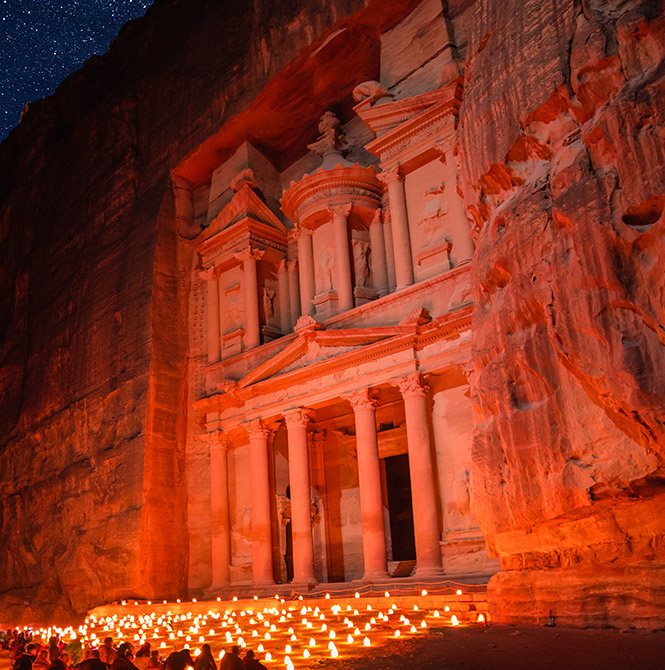
Christianity reached Petra in the early stages, and when the entire city embraced the Christian faith, residents converted many tombs into churches, including the "Tomb of Algarra", which became a church in 447 CE under Bishop Gaznos. Petra was a diocese during the Byzantine era, and this is evidenced by the relics of the cathedral still there.

During the era of Christ and the Apostles, one of the largest trading centers in the eastern Mediterranean was located in Petra, the capital of the carved Kingdom of Anbat in the Rock. Petra flourished during Anbat's rule, from the third century BC. Until the early 2nd century AD, when it was occupied by the Roman Emperor Tarajan.
Petra is a unique city with its location, the diversity of its monuments, and the beauty of the colors of its rocks. It attracts visitors from all over the world, and its name is associated with the Nabateans, who made it their capital. The Nabateans left northern Arabia and a part of them reached the Petra region and coexisted with the Edomites. They were seduced by the commercial life because of the material gain that it contained, so they abandoned the Bedouin life and became merchants.
Exiting from Sinai, Moses and the Sons of Israel crossed from Petra in the region of Edom. The local tradition says that the spring in Wadi Musa, outside Petra, is the place where Moses struck the rock and brought out the water (Numbers 20: 10-11). The Maccabean Jews were at first a friendly and cordial relationship with the Nabateans (cf. 1 Maccabees 5:25). It is almost certain that Petra was a stopover for the three wise men who presented gifts of frankincense, gold and myrrh to the baby Jesus in Bethlehem (Matthew 2:1-12). King Al-Harith, mentioned by the Apostle Paul in the second letter from the Corinthians (2 Cor 11:32), was one of the Nabatean kings who ruled Petra.
During the rule of the Byzantines, the city of Petra had an episcopal chair, and monks and hermits lived in it, and its residents turned some graves into churches, and we may not find a trace of the Byzantine civilization, perhaps because its residents began to abandon it in search of commercial gains.
Among the important monuments in Petra: